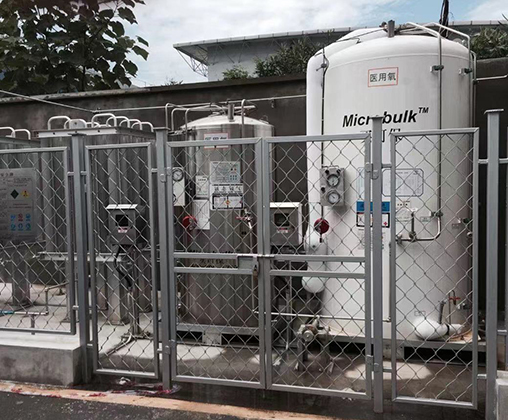Large Capacity Cryogenic LNG Storage Tanks: Insulation and Design Considerations
Large Capacity Cryogenic LNG Storage Tanks: Insulation and Design Considerations
Large-scale cryogenic LNG (Liquefied Natural Gas) storage tanks are crucial infrastructure components for energy security and distribution. A primary design consideration for these tanks is the insulation system, which directly impacts operational efficiency, safety, and longevity. The fundamental purpose of the insulation is multi-faceted: to minimize heat ingress from the ambient environment, thus reducing LNG boil-off (the natural evaporation of the super-cooled liquid); to conserve energy by preventing unnecessary cooling losses; to prevent condensation on the tank's exterior, which can lead to corrosion and structural damage; and to maintain a safe and comfortable working environment around the tank. Effective insulation is therefore essential for economic and environmental reasons.
When designing the cryogenic enclosure of an LNG storage tank, engineers must carefully consider the thermal properties of the chosen insulation materials and the specific storage conditions. Different tank geometries and operational parameters necessitate tailored insulation strategies. The goal is always to achieve the optimal balance between insulation performance, cost-effectiveness, and structural integrity.
Top Insulation Structure:
The design of the insulation at the top of the storage tank benefits from the fact that it primarily deals with thermal resistance rather than load bearing. The insulating material typically covers the inner tank's ceiling and, unlike the base, does not need to support the weight of the tank contents. Therefore, low-density materials with excellent thermal insulation properties are preferred. A common configuration involves multiple layers of insulation. For instance, the inner top section of a large LNG tank might feature a 500mm thick layer of cold-resistant glass wool. To further enhance insulation performance and prevent perlite expansion, the outermost layer of glass wool is often covered with aluminum foil. This foil also acts as a barrier, preventing moisture and other contaminants from entering the internal insulation space, which could compromise its effectiveness.
Sidewall Insulation Structure:
The insulation of the tank's sidewalls plays a critical role in maintaining the LNG's temperature. Expanded perlite is frequently chosen as the primary insulation material for the annular space between the inner and outer tank walls. However, a design challenge arises during the initial cool-down phase. As the inner tank is filled with cryogenic liquid, it undergoes significant contraction. This shrinkage can create voids or regions of insufficient perlite compaction, particularly at the top and around the edges of the sidewalls. To mitigate this issue and prevent the need for repetitive perlite refilling, a layer of flexible, insulating fiberglass mat is often applied directly to the outer wall of the inner storage tank. This matting accommodates the tank's movement, helps to distribute pressure evenly, prevents moist air from penetrating the perlite layer, and ultimately reduces the overall pressure exerted by the perlite on the inner tank wall.
Bottom Insulation Structure: Balancing Thermal Resistance and Load Bearing
The bottom insulation structure of an LNG storage tank presents the most demanding design challenges. It must simultaneously minimize cold loss and provide sufficient compressive strength to support the immense weight of the inner tank, the LNG itself, and the internal gas pressure. In the construction of a 200 m³ LNG storage tank, the bottom insulation is often strategically divided into two key sections: a pressure ring and a central ring.
Pressure Ring: This ring bears the brunt of the load and requires exceptionally high compressive strength. A composite structure combining concrete and glass brick is often used as the cold insulation material for the pressure ring. This combination provides the necessary load-bearing capacity while also offering good thermal resistance.
Central Ring: Located within the pressure ring, this area experiences lower compressive forces. Glass brick alone is frequently sufficient to meet both the strength and cold resistance requirements in this section.
By carefully selecting and arranging insulation materials, engineers can create a robust and efficient insulation system for LNG storage tanks, ensuring safe and reliable operation over their lifespan.
cryogenic lng storage tanklng storage tankstorage tanklng tankLNG









Comments